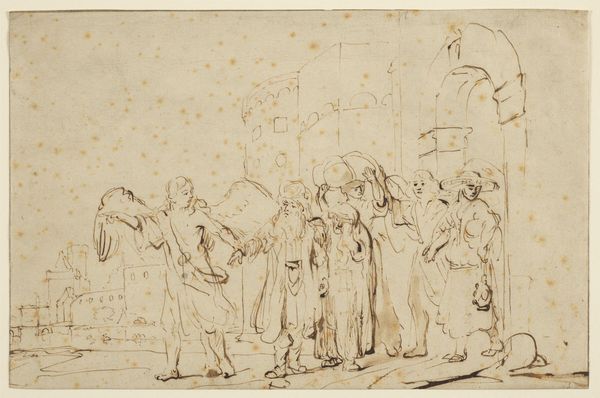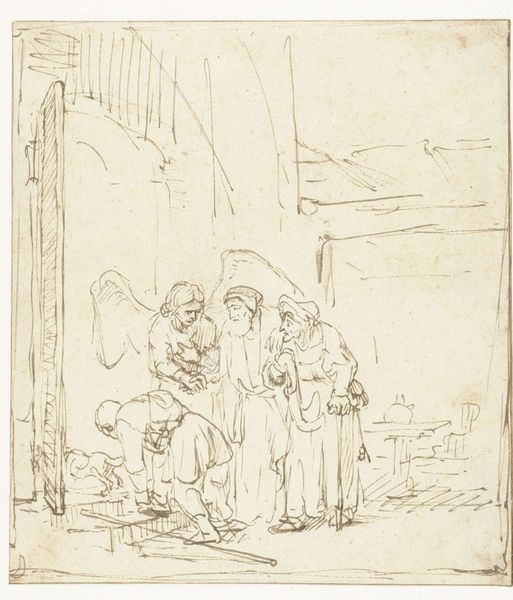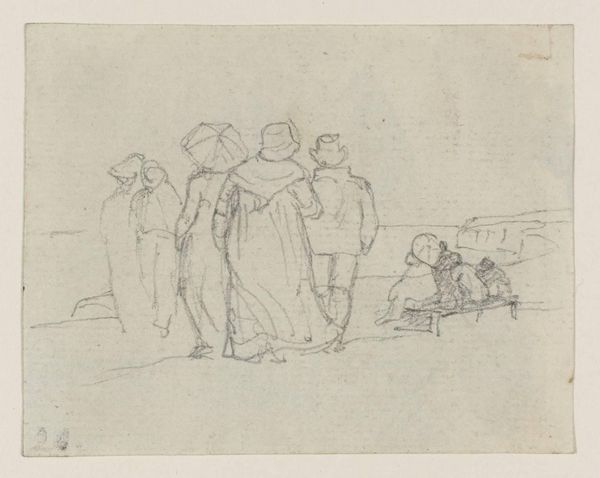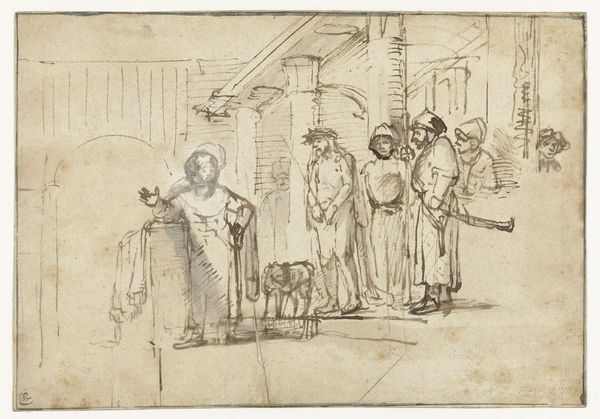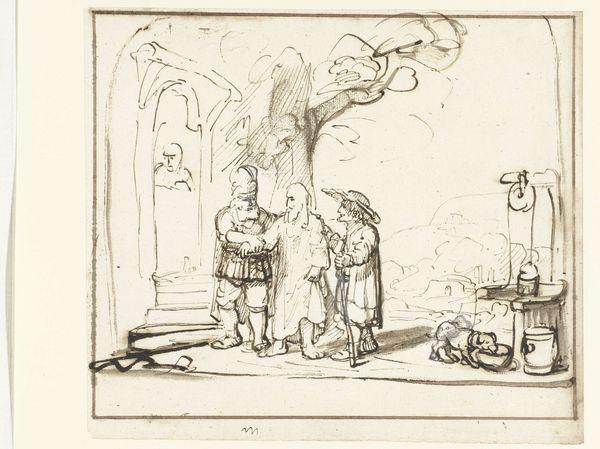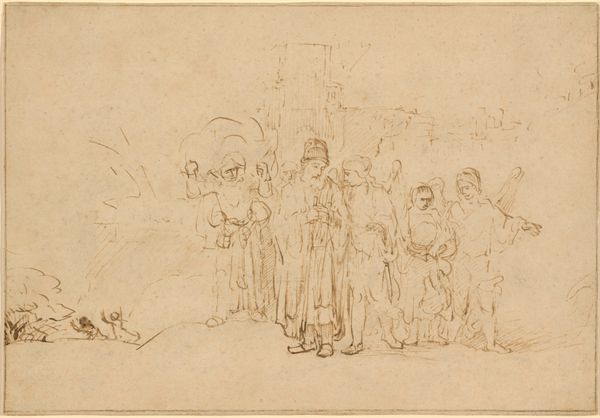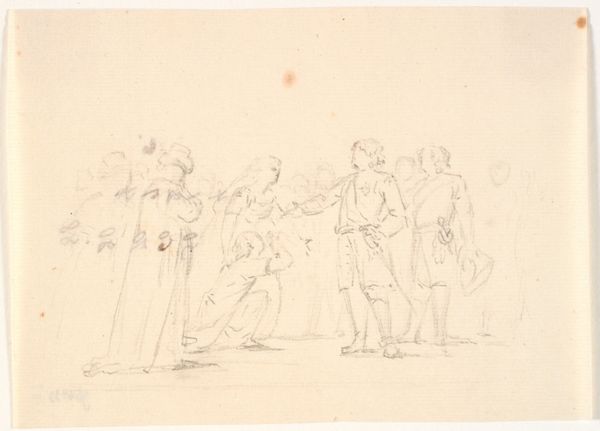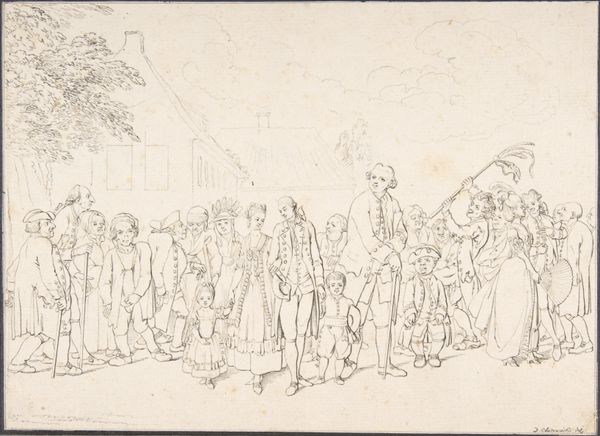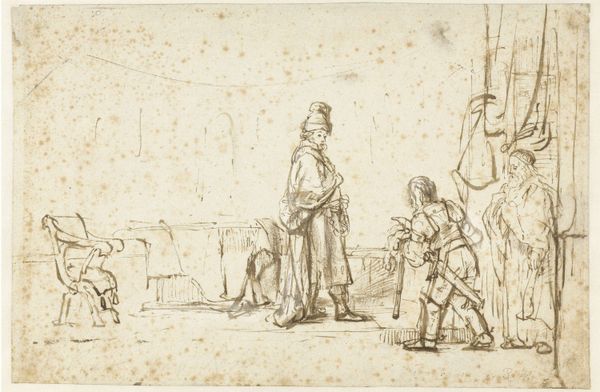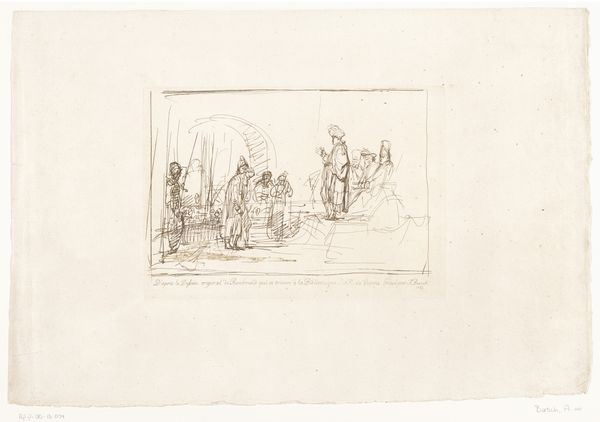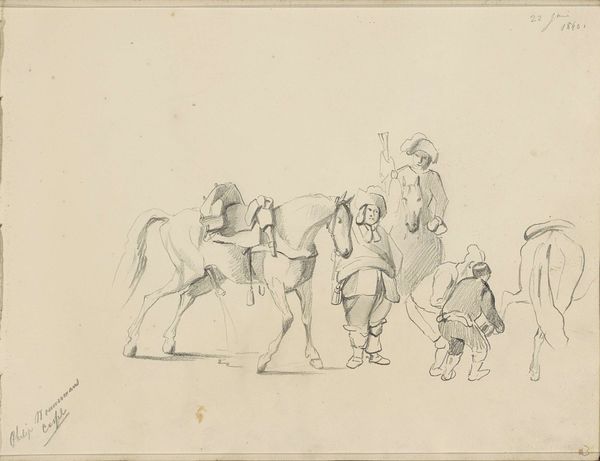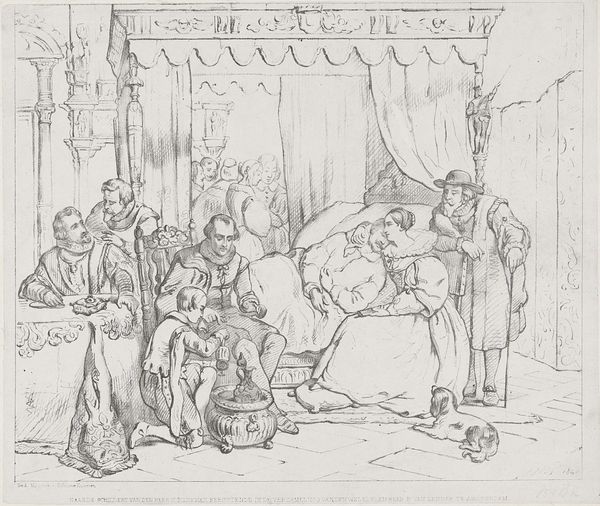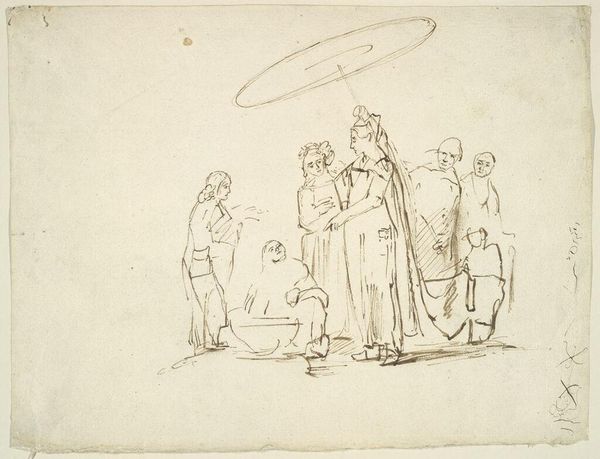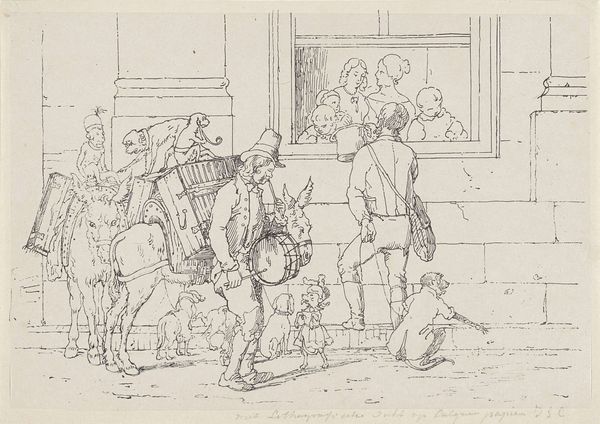
#
toned paper
#
light pencil work
#
etching
#
personal sketchbook
#
ink drawing experimentation
#
sketchbook drawing
#
watercolour illustration
#
storyboard and sketchbook work
#
sketchbook art
#
watercolor
Dimensions: height 171 mm, width 224 mm
Copyright: Rijks Museum: Open Domain
Curator: Here we have "Expulsion of Hagar and Ishmael," a work created around 1650 by Rembrandt van Rijn and currently held in the Rijksmuseum. Editor: It feels so immediate, like a snapshot, doesn't it? The quick strokes of the pen, the watercolor washes...it’s full of movement and yet somber, that expulsion scene. Curator: Indeed. This drawing utilizes watercolor and ink on toned paper. Look closely at Rembrandt’s approach—a far cry from finished presentation. The loose sketch-like quality offers an incredible glimpse into his artistic process. Editor: Absolutely! And the choice of materials says a lot. The toned paper provides a warmth, almost aged, like parchment; the economical use of watercolor…these aren’t luxury goods but practical choices for a working artist. One wonders what the material conditions in Amsterdam influenced this. Curator: Socially, Rembrandt was very much embedded in the Dutch Golden Age, when discussions around religious narratives were commonplace. His deep understanding of Biblical stories clearly informed this work and he translated complex dramas of morality for wider audiences. The printmaking tradition at the time allowed for a wide dispersal of imagery that shaped popular consciousness and identity. Editor: So how would the everyday consumer understand that? It feels rather private here – like a page torn from a sketchbook, immediate. Were there others sketching so openly? Is that freedom part of a social movement do you think, or merely an exception. Curator: That's an astute observation. Printmaking was tightly connected to commerce. As an entrepreneur himself, Rembrandt used the process of dissemination to increase social reach. As prints circulated, each viewer would respond, interpreting biblical scenes according to his beliefs. It became another way of reinforcing common morality. Editor: So he harnesses materiality and access in conjunction… interesting. Even that dog snuffling by Hagar’s feet adds to it, and emphasizes the physical here, too. The pathos seems lessened, the starker human experience emphasized by focusing more upon circumstance and means... less heavenly hand than workaday problem. Curator: I agree. Well, this small sketch really provides insights into larger debates surrounding belief, the art market, and life. Editor: It reminds us how choices about medium affect accessibility and therefore meaning. And with that in mind, let's move on to our next exhibit.
Comments
No comments
Be the first to comment and join the conversation on the ultimate creative platform.
